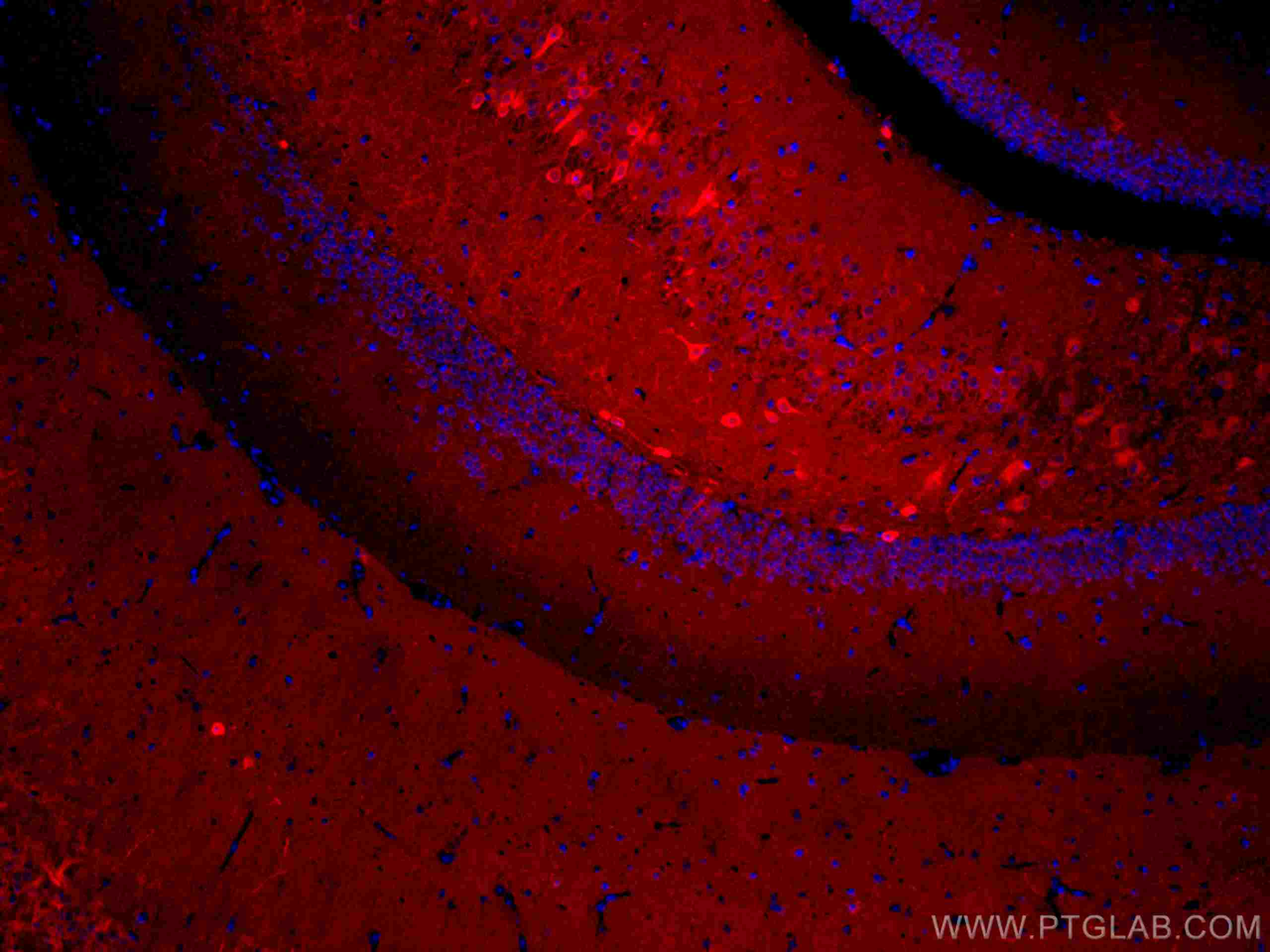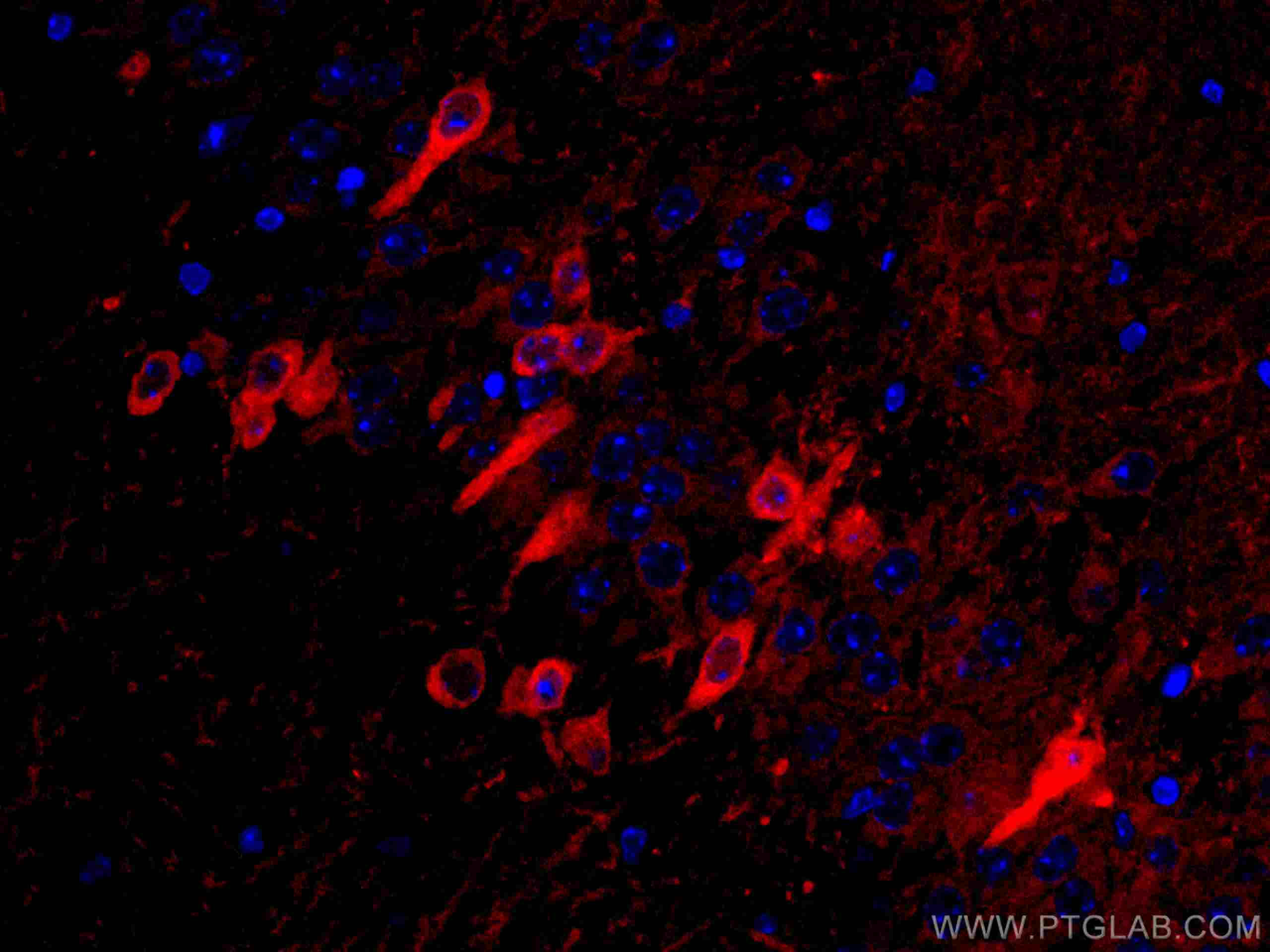Tested Applications
| Positive IF-P detected in | mouse brain tissue |
Recommended dilution
| Application | Dilution |
|---|---|
| Immunofluorescence (IF)-P | IF-P : 1:50-1:500 |
| It is recommended that this reagent should be titrated in each testing system to obtain optimal results. | |
| Sample-dependent, Check data in validation data gallery. | |
Product Information
CL594-67417 targets ACVR1 in IF-P applications and shows reactivity with Human, Mouse samples.
| Tested Reactivity | Human, Mouse |
| Host / Isotype | Mouse / IgG2a |
| Class | Monoclonal |
| Type | Antibody |
| Immunogen |
CatNo: Ag13508 Product name: Recombinant human ACVR1 protein Source: e coli.-derived, PET28a Tag: 6*His Domain: 210-509 aa of BC033867 Sequence: LLECVGKGRYGEVWRGSWQGENVAVKIFSSRDEKSWFRETELYNTVMLRHENILGFIASDMTSRHSSTQLWLITHYHEMGSLYDYLQLTTLDTVSCLRIVLSIASGLAHLHIEIFGTQGKPAIAHRDLKSKNILVKKNGQCCIADLGLAVMHSQSTNQLDVGNNPRVGTKRYMAPEVLDETIQVDCFDSYKRVDIWAFGLVLWEVARRMVSNGIVEDYKPPFYDVVPNDPSFEDMRKVVCVDQQRPNIPNRWFSDPTLTSLAKLMKECWYQNPSARLTALRIKKTLTKIDNSLDKLKTDC Predict reactive species |
| Full Name | activin A receptor, type I |
| Calculated Molecular Weight | 509 aa, 57 kDa |
| GenBank Accession Number | BC033867 |
| Gene Symbol | ACVR1 |
| Gene ID (NCBI) | 90 |
| RRID | AB_2920130 |
| Conjugate | CoraLite®594 Fluorescent Dye |
| Excitation/Emission Maxima Wavelengths | 588 nm / 604 nm |
| Form | Liquid |
| Purification Method | Protein A purification |
| UNIPROT ID | Q04771 |
| Storage Buffer | PBS with 50% glycerol, 0.05% Proclin300, 0.5% BSA, pH 7.3. |
| Storage Conditions | Store at -20°C. Avoid exposure to light. Stable for one year after shipment. Aliquoting is unnecessary for -20oC storage. |
Background Information
ACVR1 (activin receptor type I), also known as ALK2 or ACTRI, is a receptor for activin. It forms a stable complex with type II receptor after ligand binding. These receptors are all transmembrane proteins, composed of a ligand-binding extracellular domain with cysteine-rich region, a transmembrane domain, and a cytoplasmic domain with predicted serine/threonine specificity. Type I receptors are essential for signaling, and type II receptors are required for binding ligands and for expression of type I receptors. ACVR1 is expressed in many tissues including skeletal muscle and chondrocytes. It functions as a receptor for bone morphogenetic protein (BMP) and induces Indian hedgehog in chondrocytes during skeletal development. Mutations in ACVR1 gene are associated with fibrodysplasia ossificans progressive (PMID: 16642017).
Protocols
| Product Specific Protocols | |
|---|---|
| IF protocol for CL594 ACVR1 antibody CL594-67417 | Download protocol |
| Standard Protocols | |
|---|---|
| Click here to view our Standard Protocols |






